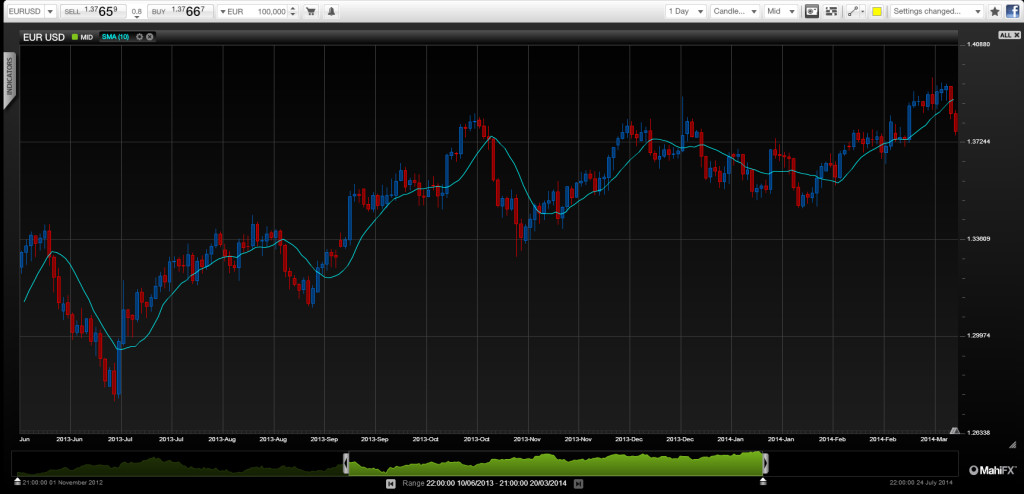There’s an inconvenient truth, which is that many western countries are so heavily indebted that they cannot afford rising interest rates, yet that is exactly what is starting to happen in the US and long before the US Federal Reserve tighten official rates.
Steadily rising interest rates should be supportive for USD as the Fed normalises its monetary policy. Yet the very process of winding down quantitative easing could be sowing the seeds for the next US economic downturn and a weaker USD.
At Wednesday’s FOMC Fed chairwoman Janet Yellen guided expectations on interest rates higher. They’re now expected to be at least 1% by end 2015 if not sooner and 2.25% before end of 2016. That’s unsettled the bond markets, which will feed through to higher borrowing costs for the whole economy if yields continue to rise.
By Justin Pugsley, Markets Analyst MahiFX. Follow @MahiFX on twitter.
Volatility as markets get used to Yellen

Q2 could be pivotal for USD
The US economy has been showing less vigour of late. That’s being blamed on the harsh winter. But as the weather thaws into spring that line of thought will be tested. In theory then Q2 should see a pick-up in economic growth – but what if it doesn’t?
The cost of credit will be a major factor for the recovery and if it rises too fast, interest-rate sensitive consumers (despite deleveraging) will rein in their spending and that will hurt the economy. Yellen may therefore have acted too soon in guiding interest rate expectations higher – after all the markets have only just digested the fact that quantitative easing is ending.
Therefore Q2 could be pivotal for the US economy, monetary policy and the strength of the USD. If growth picks up then there will be little change in the Fed’s current monetary stance.
Signs of economic weakness could lead to forward guidance on interest rates being quickly revised down. Normally this would weaken USD, unless it triggers pandemonium on the world markets in which case the US currency will be a safe haven trade for a while.
Further reading: 5 reasons for USD rally on the Fed decision
